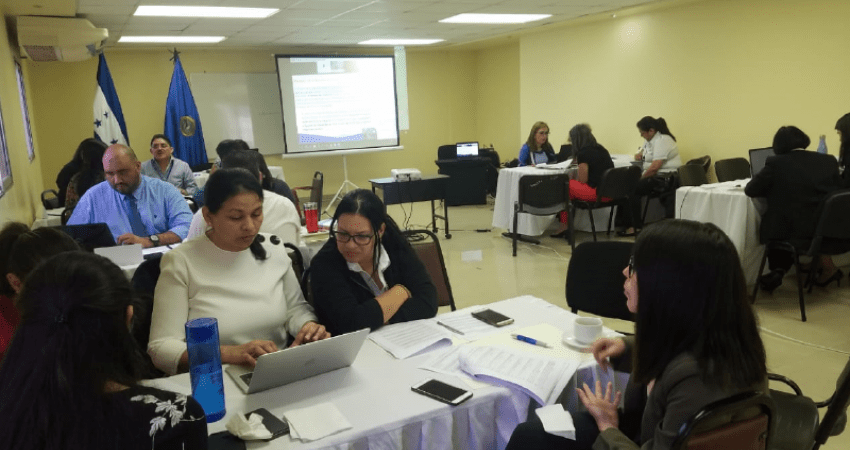SICA countries developed a regional migration assessment study

At the LIII Ordinary Meeting of Heads of State of the Central American Integration System (SICA), held on 4 and 5 June in Guatemala, the General Secretariat of SICA presented the executive summary of a regional study on the causes and consequences of migration, developed by IOM with the support of UNHCR.
The objective of this study is to generate recommendations for an Action Plan for a Comprehensive Response of Migration in the Region (PAIM- SICA), and was born as part of the cooperation agreement between IOM and SICA signed in November 2018, which proposed to work together in the design and implementation of the study.
"The entire study was carried out through a collaborative process that involved more than 70 government officials from the 8 SICA Member States, with the objective of identifying relevant capacities, needs and recommendations, which in turn would allow the development of an action plan based on real needs and adjusted to the priorities of the States," explained Estela Aragón, Research Coordinator of IOM Western Hemisphere Regional Program on Migration.
Marcelo Pisani, IOM Regional Director, added that it "was constructed in response to mandate 8 of the Special Declaration of Institutional Strengthening of SICA. And it was prepared based on the 12 guidelines formulated by the Commission of Migratory Authorities of the Member Countries of SICA (OCAM), and adopted by the Council of Ministers of Foreign Affairs of SICA, in its LXXIV Ordinary Meeting. "
Additionally, at the Summit, the Republic of Guatemala completed its Pro Tempore Presidency of SICA, which during the second half of 2019 will be led by the Republic of El Salvador.
Migrants represent approximately 3% of the world's population. Around 1.290.000 migrants live in the region of Central America and the Dominican Republic, and the number of citizens of the region living abroad is close to 6 million. Historically, migrant groups have transformed the region, bringing with them new opportunities.
This initiative shows the efforts of the Member States to respond to this changing dynamic, recognizing the unique complexities of the region, and ensuring the well-being of both their citizens and the migrant populations.
